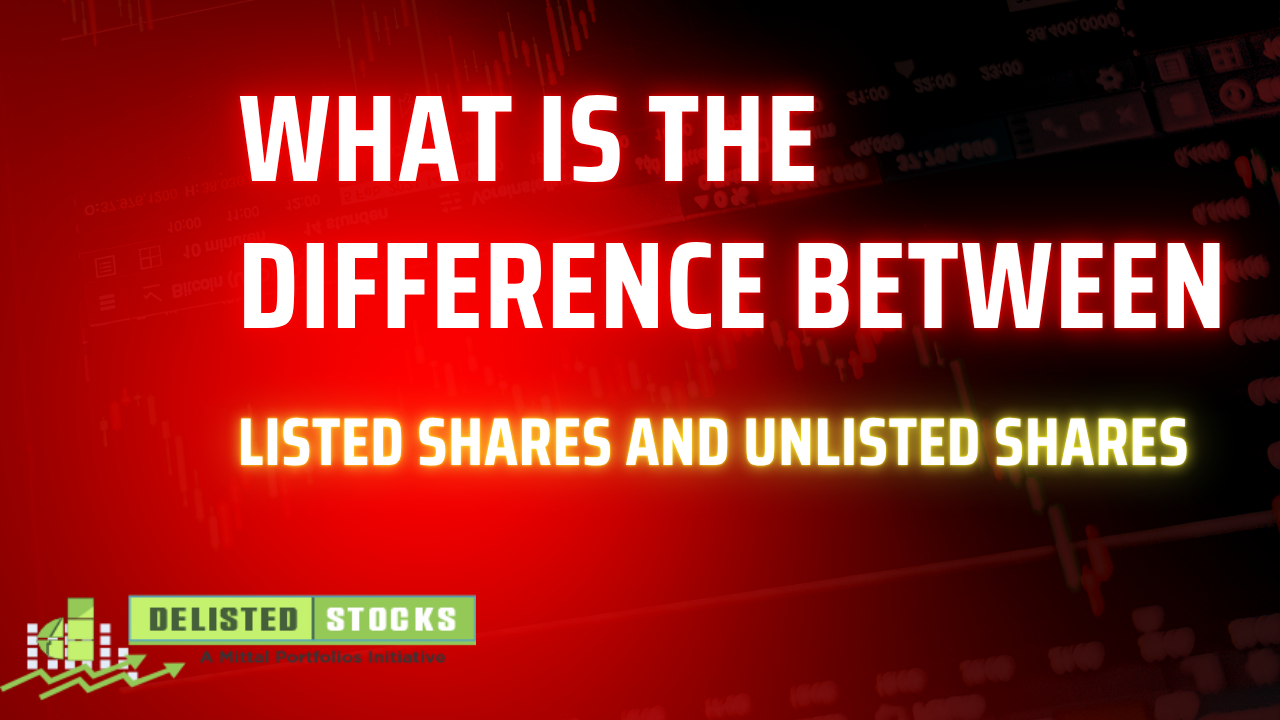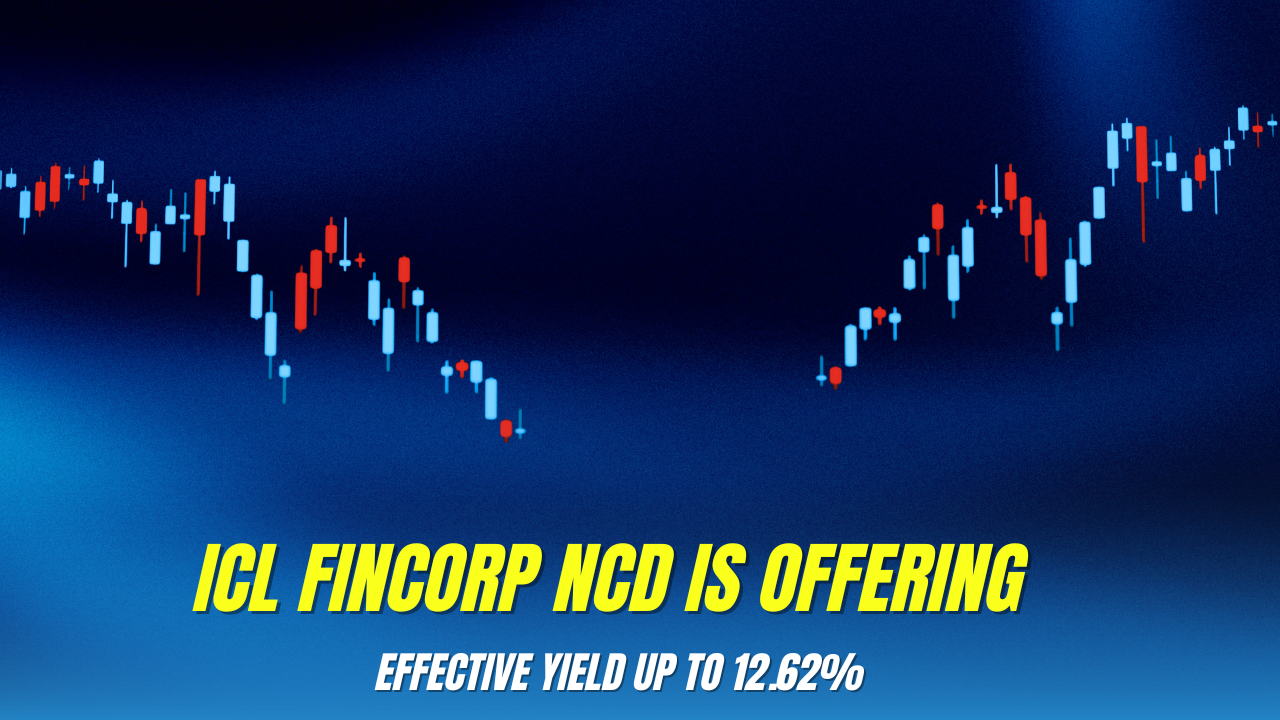There are two terms one might encounter in equity investing, one is listed shares and other is unlisted shares. Listed shares and unlisted shares both represent ownership in a company, but are different in many aspects. For example, they are different in trading methods, price valuation, and regulation. Understanding these differences is essential in making relevant investment choices. This is what this article is all about. We are going to look deeper into what Unlisted Shares and listed shares are, how their pricing operates, and how to opt for the right one.
What Are Listed Shares?
Shares that are made available to the public on trading platforms such as the BSE (Bombay Stock Exchange) and the NSE (National Stock Exchange) are called listed shares. An investor who acquires listed shares from the stock market becomes a partial owner of the business. As a result of listing shares on a stock market, a business makes its ownership available for buyers and sellers in a transparent market and provides a governed way for the public (investors) to purchase an ownership interest in the business.
Important Characteristics related to listed shares
Accessibility: Anyone with a demat account can sell and buy shares at their convenience.
Liquidity: Shares can be easily and quickly transformed into cash through an active trading environment (often).
Pricing: Prices get updated instant and in real-time based on the demand and supply of available shares on the trading platform.
Regulation: Listed environments and market segments are governed and regulated.
Why Listed Share Prices Are Important
When prices of listed shares are transparent, it gives an investor an opportunity to easily determine the available market value of a company. Because the prices are updated in real time, it can be utilized to evaluate the company’s value at a given time. Investors can manage their own risks efficiently and decide at their own liking how to enter an investment or liquidate it (exit). Highly liquid environments can allow people to move quickly (or make a decision) in the market, which can be useful to create an opportunity for remaining market participants or novices (new market entrants).
What Are Unlisted Shares?
Unlisted shares pertain to companies whose shares are not available for public trading on stock exchanges such as the NSE or the BSE. This includes private companies as well as public companies that have chosen not to list. The absence of these companies from the public market means that their shares can only be obtained through private buy/sell agreements, employee stock ownership plans, or other dedicated unlisted share trading markets.
Key Features of Unlisted Shares
Private transactions: These shares are exchanged via over-the-counter (OTC) sales or individual bargaining arrangements rather than through a centralized marketplace.
Pricing opacity: Unlisted shares do not have available prices on public trading systems, so their prices do not fluctuate with market supply or demand. Instead, their valuations are dictated by private-market considerations, funding rounds, or individual agreements.
Liquidity: The lack of public supply and demand can cause unlisted shares to be illiquid so that sales can take a long time or sales can only happen at a steep discount to a fair value.
Less compliant: Unlisted companies have greater flexibility around disclosure provisions as well as overall compliance when compared to other public companies.
Why Unlisted share prices are important ?
Determining the value of unlisted shares requires market analysis because there is no active secondary market. Instead of relying on a true market valuation, the valuation is more of an educated guess, based on internal financials, potential investor interest, recent transactions, and internal projections.
The negotiations take place between buyer and seller. There is often a large gulf between how much a buyer is willing to pay and how much a seller is hoping to receive.
Investors need to understand that there will presumably be greater timeframes associated with holding unlisted shares.
Comparison Analysis: Listed Share vs. Unlisted Share
Common stock types include listed and unlisted shares. Knowing the differences between the two may allow for better placement of equity investments. Some of the differences between the two investment types include liquidity, Pricing and Risk, and Accessibility. Let us analyze these factors.
| Listed Shares | Unlisted Shares | |
| Liquidity and Trading Platform | They are present at the formal stock exchanges, and carry high liquidity. Investors can buy and sell listed shares during market hours and through the use of a demat and trading account. | These are traded through over-the-counter or private channels. They do not follow any formal channels. In absence of formal channels, one may find a buyer and the conclusion of a transaction depends upon their deal. |
| Transparency and Regulation | Businesses must comply with particular bonding regulations, file quarterly results and remain compliant with other regulations binding the stock exchanges. | Unlisted shares are subjected to lesser regulatory requirements and, therefore, less public financial information. |
| Valuation and Pricing | Prices for listed shares are visible, and updated on a real time basis therefore easier to compare. | Internal metrics, negotiation dynamics, recent private transactions, or valuation rounds influence an unlisted company’s estimated value. There are no specific benchmarks for unlisted public equity performance. |
| Risk and Return profile | These are more risk averse because regulatory reporting, liquidity, and active supervision are present. Even then, the returns can be fairly mediocre unless the company realizes above average growth. | As the company is illiquid, there is lower visibility, and speculation. Returns are considerably higher for the illiquid company that goes public or if there are major corporate expansions. |
| Participation and Distribution | All retail investors can buy shares for a company given that they have a demat and trading accounts. | The accessibility often funnels through private equity investors, employees, or high-net-worth individuals. |
Factors to Consider While Making Investment Decisions
In determining if to invest in listed or unlisted shares, you should consider your personal goals, willingness to take on risk, and need for liquidity.
Although investments in listed shares can be more efficient and easier to manage, unlisted shares have their own valuable growth opportunities for investors willing to take on more risk and wait longer for returns.
For Unlisted Shares
Plan for Long Term: Unlisted shares do not have a secondary market. To sell unlisted shares, investors need to contact buyers through a personalized channel. Patience is the key while selling unlisted shares.
Understand the Valuation: This should be the most difficult part of your unlisted shares investing decision. Determine the price at which unlisted shares are selling.
Evaluate Business Potential: Do thorough research when it comes to analyzing unlisted shares. You must assess the company’s management and the industry for systemic and potential growth. Substantial future gains are more likely with internal goals and public stock options.
Plan for Limited Liquidity: Unlisted shares do come with a level of illiquidity. You will likely have to wait for a large corporate event to take place, like a public listing, buyback, or acquisition deal to realize any returns on the unlisted shares.
Diversify with Intent: Although unlisted shares have the benefits of early-stage entry and upside potential, they remain a better diversification choice within a balanced portfolio.
For Listed Shares
Entry and Exit: As listed shares can be exchanged with one another in a stock and a share market, they can be exited at one’s discretion and convenience.
Price Transparency: Listed share prices can be accessed and retrieved in real time, which makes ease of market tracking and a versatile response straightforward.
Risk Profile: Because of market regulation, public disclosures, and market scrutiny, listed shares take an approach with a smaller time horizon for one’s investments; as well as providing for one’s expected liquidity.
Ideal for Active Monitoring: If one aligns well with and prefers a less frequent scheduling or timing, listed shares can help in activities in and around priced market shares.
Key Consideration Regarding Listed Shares and Unlisted Shares
| Key Consideration | Listed Shares | Unlisted Shares |
| Liquidity | It will be bought and sold through stock exchanges | The sales of unlisted shares will take place through private negotiations |
| Risk Tolerance | Regulatory supervision is present over listed shares | There is no specific regulatory oversight for these shares |
| Investment Horizon | Best served by short and or medium-term investors | Longer-term investors who can afford to wait for significant events like IPOs, mergers or acquisitions |
| Access & Eligibility | Publicly available and be accessed by retail investors through demat and trading accounts | Access only through private placements, ESOPs, or custom specialist platforms. |
| Pricing & Valuation | Current prices reflect an active and transparent marketplace. | Valuation is a function of previous funding rounds on internal and negotiated prices. |
Bottom Line
Although having ownership in a company through listed and unlisted equity is the same, they cater to different investor preferences. Listed equity gives the investor liquidity, and market access, and fixed pricing determined by the market.
Unlisted equity is an excellent way of gaining access to unlisted shares with potentially high growth; if investors know how to evaluate risk, plan for long-term liquidity and negotiate the pricing. It comes down to which asset is most optimal for your financial objectives, time frame, and risk appetite.
FAQS
Q1-What is the key difference between shares that are listed versus shares that are unlisted?
The key difference between the listed shares and unlisted shares is that the listed shares can be bought and sold on stock exchanges, such as the NSE or BSE.
On the other hand, unlisted shares are traded on a much more private basis. Investors need to plan for liquidity. These shares can offer early investors the opportunity to hold equity in a potentially high-growth company prior to an IPO.
Q2-Why would an investor prefer unlisted shares as opposed to listed shares?
The unlisted shares might be the most prudent investment option for investing in companies that are not yet publicly traded with potentially high-growth opportunities. With right risk management techniques unlisted shares reward investors with a sizable return in the long haul, particularly in the case of an IPO or an acquisition of the company.
Q3-How can an investor obtain unlisted shares that are not for sale on stock exchanges?
The Unlisted shares can be obtained by way of private equity placements, for instance by integrating unlisted equities, through ESOPs, or directly from the company’s founding promoters or current shareholders. These channels are often subjected to a degree of verification, and investors need to take care and perform due diligence before they engage in such activities.
Q4-When do unlisted shares tend to become more easily sold or exited?
The unlisted shares tend to be sold more easily during an Initial Public Offering (IPO), an acquisition of the company, or a buyback of the shares. Investors may have to wait to realize such profits.
Investors, in some situations, manage to do so via a private arrangement or some specialized online platforms.
Q5-What should be taken into consideration by investors prior to purchase of listed or unlisted shares?
The criteria like risk tolerance, time frame to invest, fundamentals of the company, methods of valuation, and liquidity needs to be evaluated by the investor before investing.
For investors’ short-term liquidity, listed shares are the way to go, whereas unlisted shares are better for long-term investors seeking higher returns.
Q6-Where should investors go to find the current price of unlisted shares?
The unlisted shares do not have a live update regarding prices. Their valuation is determined by private transactions, recent deal activities, funding rounds or investor arrangements. To know the current valuation of unlisted shares, investors go to specialized brokerage firms or platforms like Delisted Stocks that facilitate unlisted share trading.
Q7-What are the implications of an unlisted company going public?
Unlisted company shareholders are affected when the unlisted company goes public. Going public means unlisted company shareholders will have their shares traded on a stock exchange and will have the option of trading their shares and receiving cash, which allows for liquidating their investment. Going public allows unlisted shareholders access to fully cashing out their investment. Additionally, going public can lead to a more transparent company valuation, although this depends on the market situation and the public listing valuation.
Disclaimer:
This article is for informational purposes only and should not be considered investment advice. Prices and data of unlisted shares are based on publicly available sources and may vary. Investors are advised to conduct independent research or consult financial professionals before making investment decisions.









